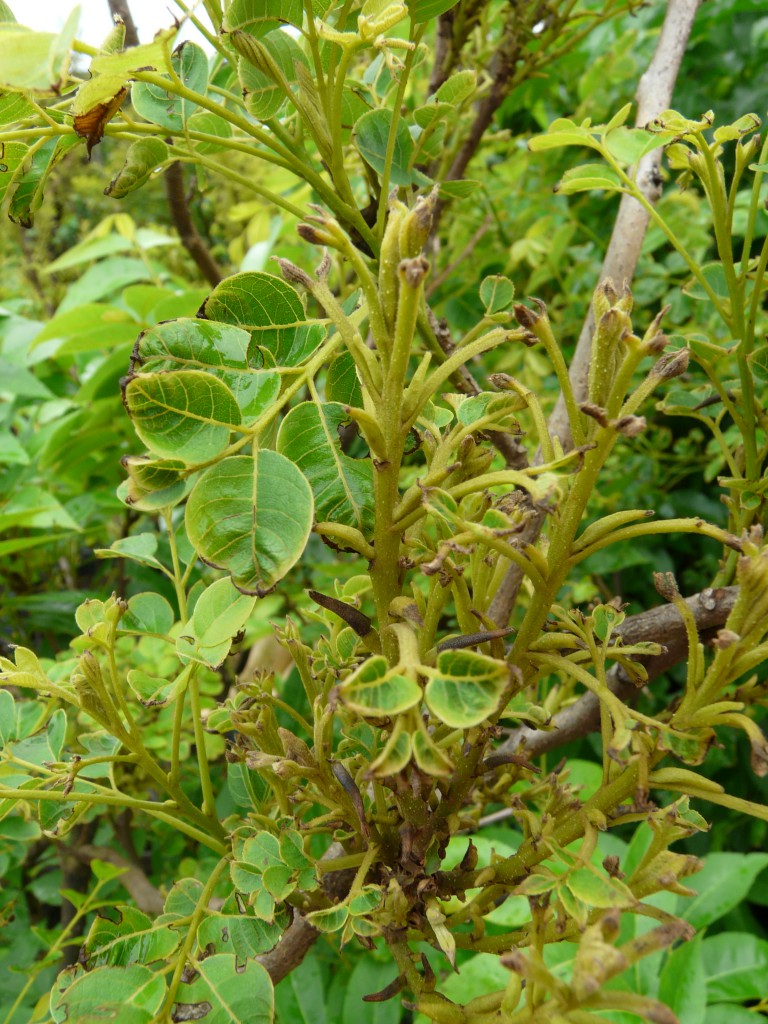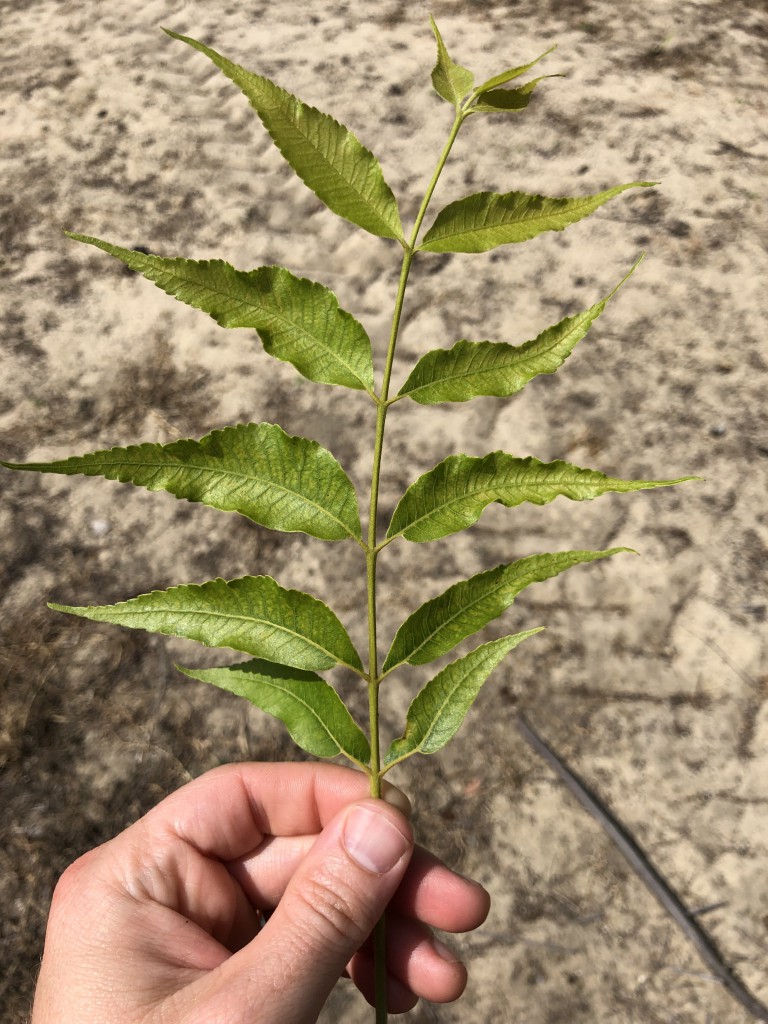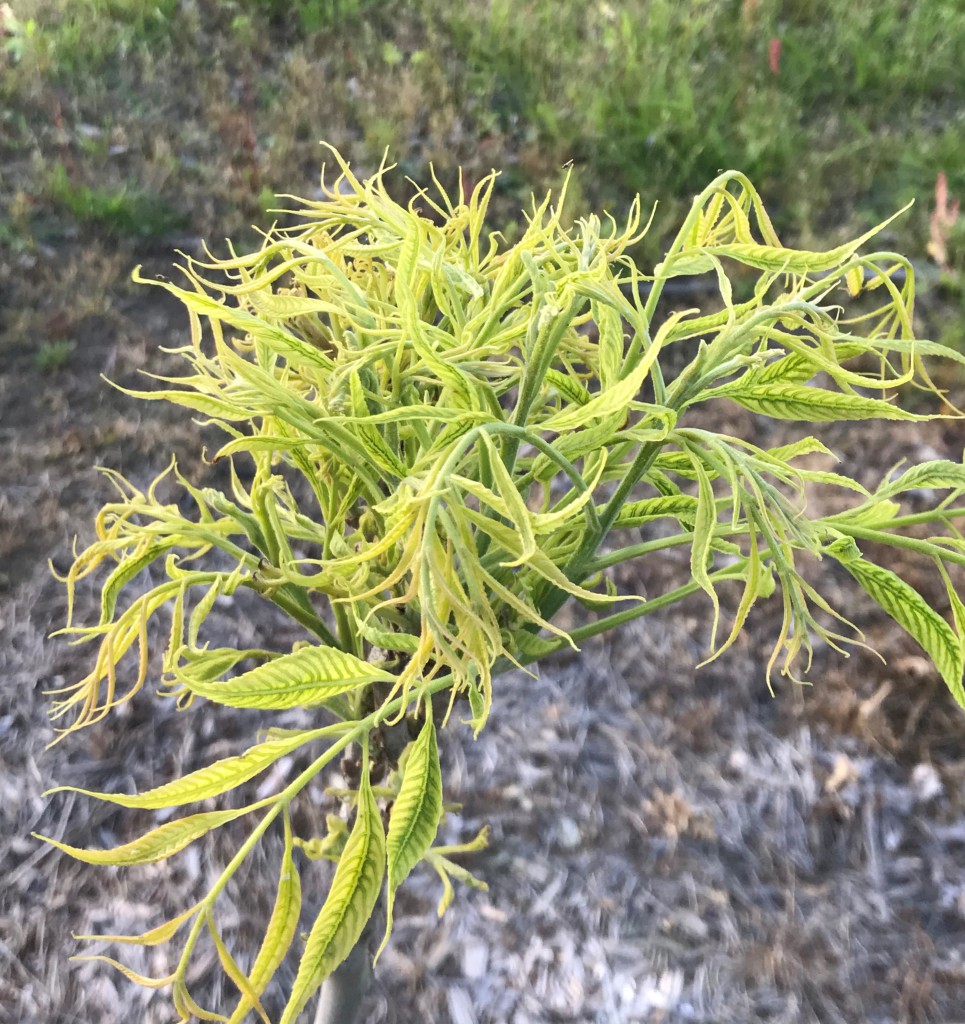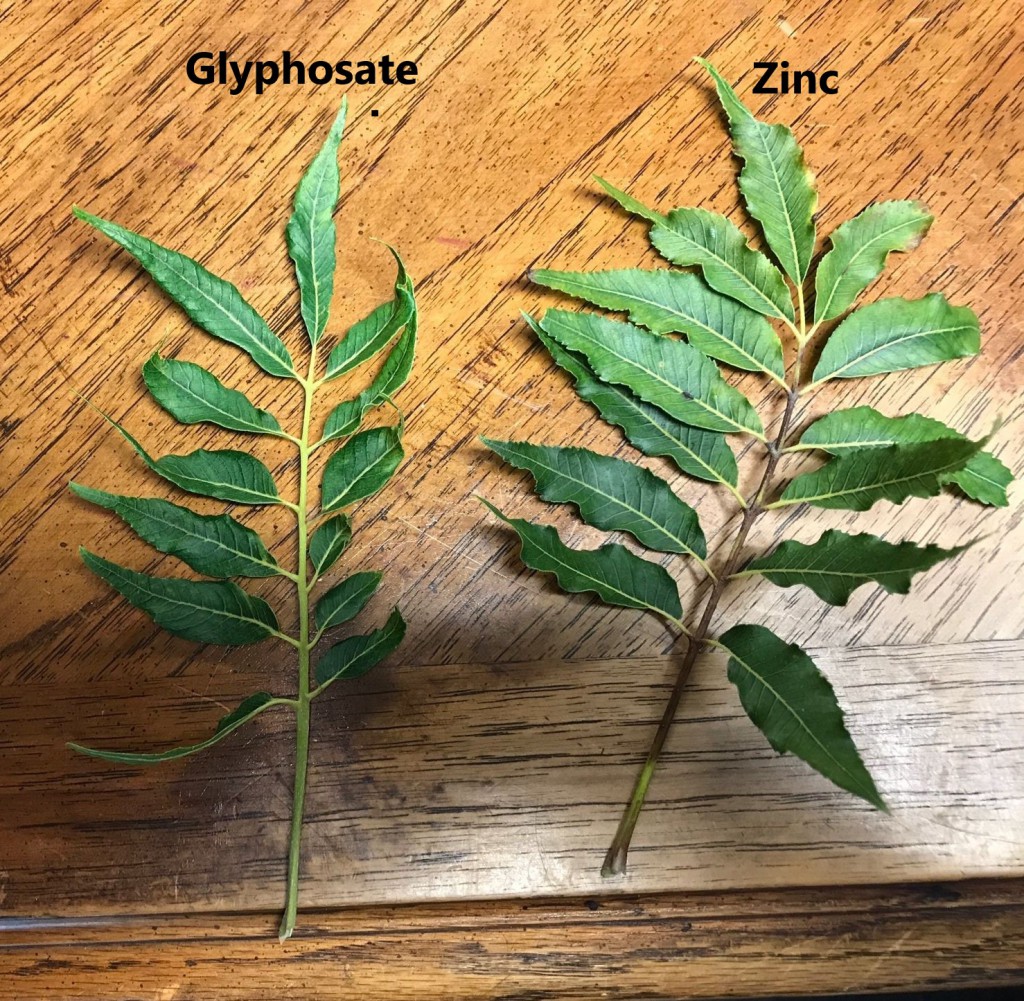We are seeing some common issues on young trees at this time. I want to show you some photos to help note the difference in nutrient deficiencies and glyphosate injury. But even more important is to remember is that often times, more than one or all of these symptoms are present in your orchard.
Mouse Ear
Characteristically, this is one of the easiest ones to see. Mouse ear symptoms used to be attributed to a virus, a copper deficiency and a manganese deficiency. It is now proven to be symptomatic of nickel deficiency. It comes from a physiological deficiency at budbreak and is also influenced by biotic and abiotic factors such as cool soils and soil high in Zn, Ca, Mg, and P. The characteristic signs of mouse ear is rounded leaf edges and dwarfed leaves.
The problem tends to be more of an issue in first year trees, but can occur in older trees. When this issues shows up, treat trees with foliar nickel sprays. The rate is 1 – 1.5 pints per 100 gallons of water. Treat about every 3 – 4 weeks and spray only to leaf wetness. Since nickel is not absorbed by the plant until the leaves are in the parachute stage, it is good to apply another foliar spray in September or October. This is essentially a preventative spray for the following year since the nickel is stored in the buds and stem tissues over the winter and be available to the tree at budbreak.

Mouse ear characterized by rounded leaves 
Mouse year of 4-year-old tree
Zinc Deficiency
Zinc’s availability in the soil is low for young trees due to soil pH. Zn uptake is also reduced with N and P applications. This is why we apply zinc to soils along with lime and other nutrients. Our general characteristic of zinc deficiency a curling of young leaves giving the leaf a wavy margin.When we see zinc deficiency in a young orchard, like treating mouse ear, we need to apply foliar zinc. Because there are many different options for zinc, consult each label for rate to apply.
Just as important as foliar zinc is soil applied zinc. Mature trees will eventually take up zinc from the soil in addition to foliar applications. It takes time to build zinc in the soil. Don’t forget our soil zinc sulfate applications of 1 -3 lbs per tree per year.

Wavy leaves of Zinc deficiency 
Wavy leaves of zinc deficiency. -Photo by S. Curry
Glyphosate Injury
Glyphosate injury is very common in young trees simply because we are treating so close to trees the herbicide easily contacts the tree. In the case of young trees (less than 3 years old), it injures by contacting green bark. Most of the time trees suffer some damage, leaf deformation, and defoliation, but the good news is they usually refoliate with little long-term effects. The severity of damage is really dependent on herbicide rate and the extent of its coverage. In very severe cases, glyphosate can kill tree limbs. This is rare and would be evident within the first year or two following application. Repeated applications would have more significant, long-term effects, which could eventually result in death of the tree.
How do we identify glyphosate injury? Leaves are thin and strapped often with some chlorosis or yellowing. Heavy concentrations can cause dieback.

Strapped and chlorotic leaves of glyphosate injury.

Glyphosate injury (left) compared to zinc deficiency (right)
Summary
- Nickel deficiency: Round leaf edges, dwarfed leaves
- Zinc deficiency: Wavy leaf edges
- Glyphosate Injury: Strapped, chlorotic leaves
It is good to know the difference, but keep in mind that we oftentimes see all of this together.
